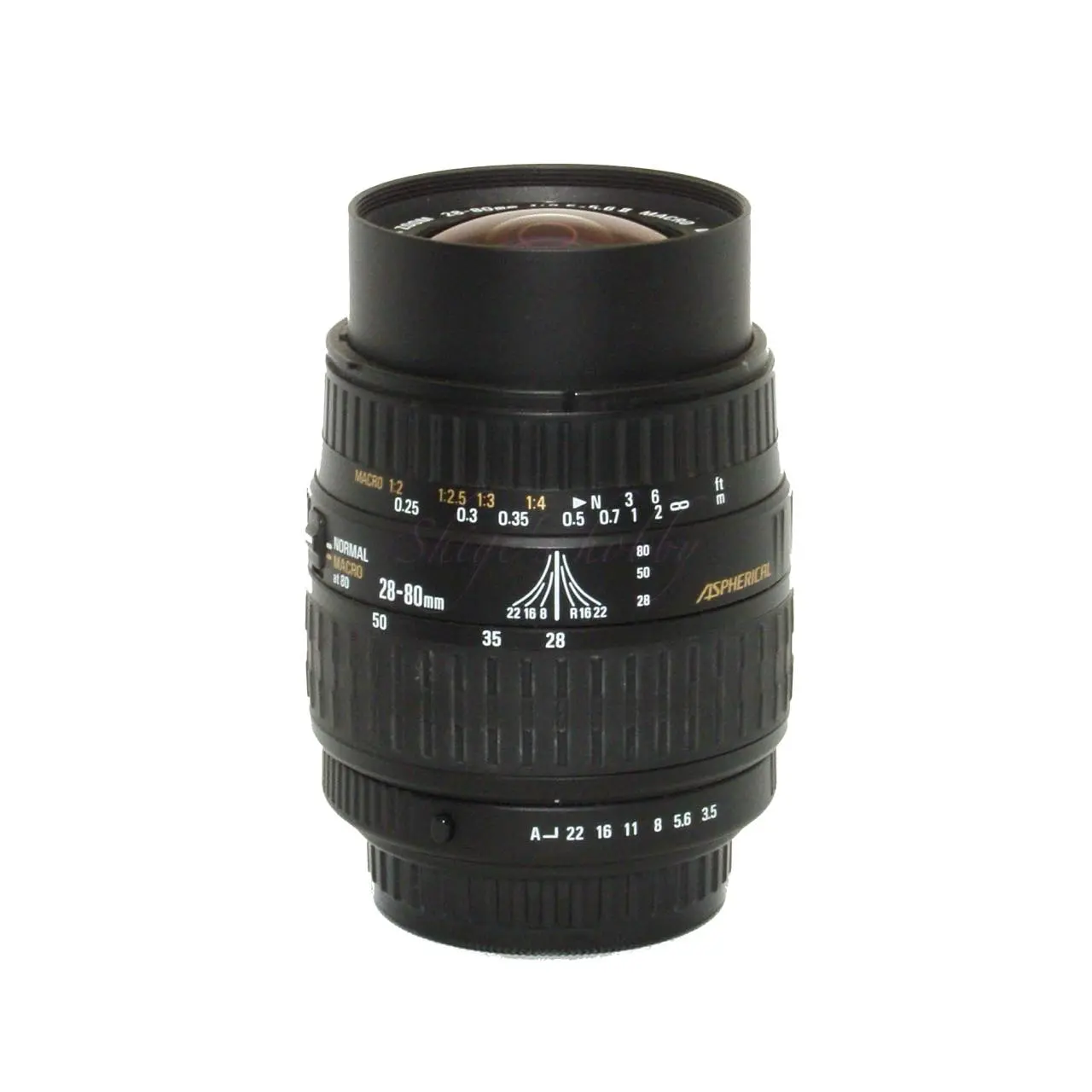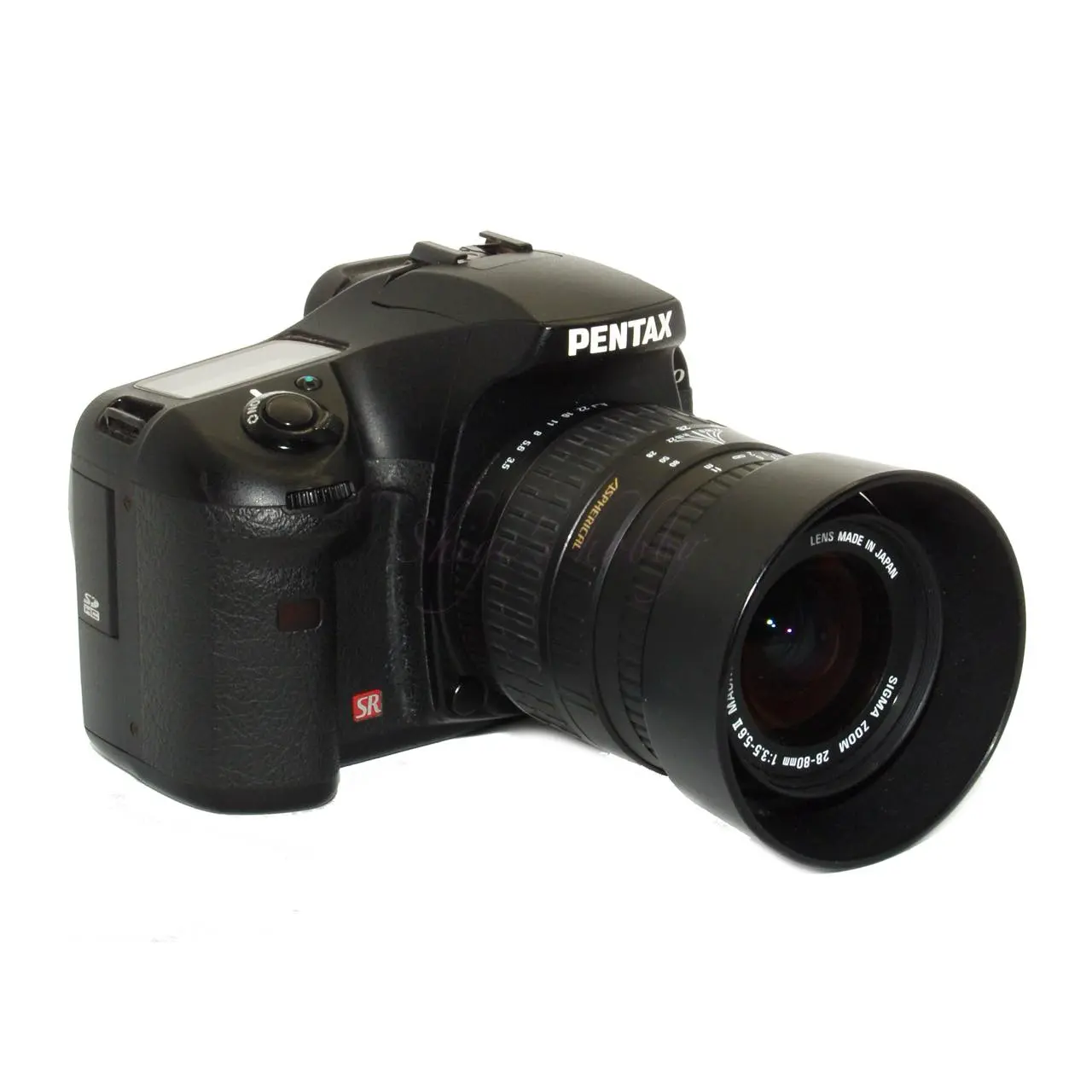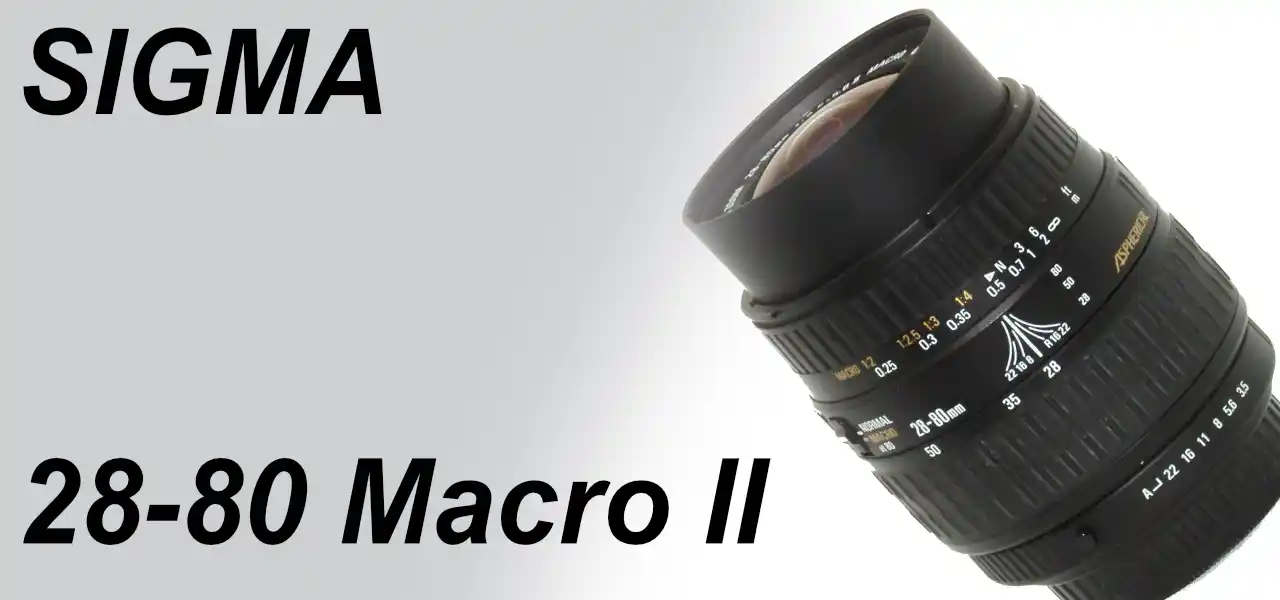A review and sample images using the SIGMA MINI ZOOM MACRO 28-80mmF3.5-5.6 Ⅱ ASPHERICAL with the PENTAX K20D.
- Please see the disclaimer regarding advertising here.
- Italicized links in the text are advertisement links that take you to other sites.
of contents
Gallery
The following cameras were used to take the sample photos:
- PENTAX K20D
Review


1.Overview
The SIGMA MINI ZOOM MACRO 28-80mm F3.5-5.6 II ASPHERICAL is a standard zoom lens covering 35mm film, released by Sigma around 2000.
As the name suggests, the lens has a focal length of 28-80mm, with an aperture of F3.5 at the wide-angle end and F5.6 at the telephoto end. The minimum focusing distance is 0.5m throughout the entire lens range, and can be reduced to 0.25m at the 80mm focal length by engaging the macro switch.
Sigma lens names are a list of functions and performance features, with MINI ZOOM referring to the compact lens barrel, MACRO referring to the macro shooting function at the telephoto end, and ASPHERICAL referring to the use of an aspherical lens.
The lens has a seven-element, seven-group configuration, and uses an aspherical lens, but no other notable features.
The front filter is 55mm in diameter, and a plastic cylindrical bayonet hood can be attached.
As it is a budget lens, the mount is made of plastic.
The PENTAX-K mount version allows aperture control on the lens itself, as there is an aperture ring at the base of the lens for adjusting the aperture value. When the lens aperture is set to A mode, the aperture value can be controlled on the camera. Other controls include a zoom ring, focus ring, and macro switch. Lens position indicators are printed on the lens barrel.
This lens is released in five mounts: Sigma SA mount, Nikon F mount, Canon EF mount, Sony A mount, and Pentax K mount.
2.Usability
I purchased the SIGMA MINI ZOOM MACRO 28-80mmF3.5-5.6 II ASPHERICAL as a set of two lenses, a standard zoom and a telephoto zoom, to use with the PENTAX K20D.
“Description”
First of all, the lens’s rendering covers 35mm film, so when used with a camera equipped with an APS-C size sensor, only the central part of the lens is used, resulting in a reasonable image.
As it is a lens from the film era, the beauty of the bokeh and resolution are lacking, so it is only suitable for use as a record of images. If you use it without high expectations, you will find that the images are actually quite good.
The 80mm macro at the telephoto end can be focused as close as 0.25m by using the dedicated macro switch on the lens barrel. When the lens barrel is extended further, the shooting magnification is 1:2, which is half macro performance. Central resolution is sufficient when shooting close up, but peripheral bokeh, like that of distant subjects, is not as beautiful.
The macro switch is explained at the end of the “Operability” section.
- There’s a lot of information online about the difference between 1:1 macro and half macro. To summarize, when you photograph a subject and the image on the film or sensor appears the same size as the actual object, it’s called 1:1, while when it appears half the size, it’s called half 1:2.
- With digital cameras, you view the image on the sensor on a monitor, so it’s difficult to compare the actual size of the subject when photographed, and so the terms 1:1 and half are difficult to understand with digital cameras.
“Operability”
Next, let’s explain operation.
When used with the PENTAX K20D, which has an APS-C sensor, the lens’s 28-80mm focal length corresponds to a 35mm equivalent focal length range of 42mm-120mm.
Older PENTAX-K mount autofocus lenses do not have a motor on the lens itself; instead, a camera motor is connected to a lens gear via a shaft to drive the lens focus ring. Because this lens is inexpensive, manual focus cannot be interrupted during autofocus.
With this lens, the autofocus drive speed depends on the power of the camera’s motor, so it is appropriate for the K20D. It is significantly slower than lenses with ultrasonic motors. Since autofocus accuracy depends on the camera, the lens has little to do with it.
The focus ring feels loose and unsatisfying when rotating manually, and is intended for use with autofocus. This is because a heavy focus ring makes quick focusing difficult with autofocus, and a powerful motor is required to move the focus ring, so the lens is made as light as possible.
The zoom ring feels quite firm, but the way the lens retracts and retracts feels dated.
The lens is designed so that it’s shortest when the zoom ring is set to 50mm and longest at either end, 28mm or 80mm.
If you’re used to a non-retractable inner zoom lens, or a lens that’s shortest at the wide-angle end and longest at the telephoto end, this behavior will feel strange. It’s a gimmick that’s sometimes seen on older lenses.
To get around this, attaching a lens hood to the lens completely retracts and retracts the lens barrel, eliminating the need to worry about this inconsistent movement. However, the lens extends at 80mm, which has the disadvantage of eliminating most of the hood’s effect at the telephoto end.
This section explains how to operate the macro switch to use the macro function at the telephoto end.
The macro switch can only be slid when the zoom ring is set to 80mm. By sliding the switch, the lens can be extended to 0.25m, exceeding the conventional minimum focusing distance of 0.5m.
To cancel macro mode, slide the switch in the other direction, but you can only slide it when the focus ring is out of the macro range. You cannot slide the switch when the focus ring is in the macro range, so be careful not to force it as this will damage the switch.
Specifically, you need to move the focus ring close to infinity.
In manual focus, simply move the focus ring towards infinity. In autofocus, aim at a distant subject, press the shutter button, and move the focus ring towards infinity.
3.Summary
In conclusion, to sum up the SIGMA MINI ZOOM MACRO 28-80mmF3.5-5.6 II ASPHERICAL is a budget zoom lens made for budget SLR cameras.
At the telephoto end it becomes an 80mm half-macro lens, so it is a lens that can be somewhat recommended if you often use it for close-up photography.
However, as you cannot expect good depiction at the edges of the frame, we recommend using a camera with an APS-C sensor.
Specifications, considerations, etc.
In my summary, I wrote that it should be limited to cameras with APS-C sensors, but with high-resolution cameras like the PENTAX K-1 and Sony α900, which have 35mm full-frame sensors, you can get the most out of your camera by using more modern lenses with resolution all the way to the periphery. It’s best to think of older, cheaper lenses as just for fun.
If you want to play around with these old, dark lenses, I recommend a Sony or PENTAX digital camera with in-body image stabilization. Autofocus lenses have electronic contacts that communicate the position of the zoom ring to the camera body, so the image stabilization focal length is automatically set on the body.
In contrast, many manual-focus zoom lenses without electronic contacts lack a mechanism for communicating focal length, making it impractical to manually change the camera body’s image stabilization focal length every time you change the focal length during shooting.
While Sigma also made budget cameras during this period, their main source of income was budget lenses for major camera manufacturers. This lens is part of that lineup, and while its list price is ¥30,000, I recall it selling new for around ¥10,000.
When it comes to older Sigma lenses, you need to be careful with the Canon EF versions. Anyone who used Canon cameras in the 1990s will know this, but Canon would change the signals between the lens and body with each new camera release in order to eliminate unlicensed third-party lenses.
As a result, if the manufacturing dates of the lens and camera body differ, the camera and body will not be able to exchange signals properly, rendering the lens unusable.
The lens introduced here is available in a Canon EF mount version, but because it is a product from the 2000s, there is a chance that it will fail due to an error (Err 01) when attached to a digital SLR camera made around 2010.
While the lens was still available, Sigma offered a control chip rewrite service for lenses that displayed errors, making the lens compatible with incompatible cameras.
This is also a limited-time service, and the control chip reprogramming service is not available for lenses that have been out of production for a certain amount of time and are no longer supported, so if you purchase an old Sigma Canon EF-mount lens to use with a Canon SLR camera, you will need to attach the lens to the body and check that it is recognized without any problems.
The linked article introduces a modification that involves manually adding a control chip to the lens mount, thereby circumventing Canon protection. The website that introduced the modification has since disappeared, but a record of it remains on WebArchive.
- How can I fix Err 01 with a film-era Sigma lens on a Canon DSLR?
- Canon EOS protocol convertor for old Sigma lens・WebArchive
Nikon, Pentax-K, and Minolta α didn’t have this problem, so you can use old Sigma lenses without worry. Of course, there’s no need to worry about compatibility with the original Sigma-SA mount.
| 項目 | MINI ZOOM MACRO 28-80mmF3.5-5.6 Ⅱ ASPHERICAL |
| 焦点距離(mm) | 28-80 |
| 最大絞り | 3.5-5.6 |
| 最小絞り | 22 |
| 絞り羽根 | 8 |
| レンズ構成 | 7群7枚 |
| 最短撮影距離(m) | 0.5/(0.25) |
| レンズ長(mm)・(SAマウント) | 71 |
| レンズ最大径(mm)・(SAマウント) | 70 |
| フィルター径(mm) | 55 |
| 重量(g)・(SAマウント) | 245 |
| フード | バヨネット円筒フード |
| リリース年 | 2000年頃 |
| 対応マウント | SIGMA-SA CANON-EF NIKON-F α(DG) PENTAX |
| 価格(税別) | ¥30,000 |
Reference links
- MINI ZOOM MACRO 28-80mmF3.5-5.6 Ⅱ ASPHERICAL・WebArchive
- PENTAX K20D・Shige’s hobby
Affiliate links
- Sigma・Ads by ebay
- Sigma lens・Ads by ebay

Amazon Prime Sale
Update history
- 2025.10.1



Be First to Comment